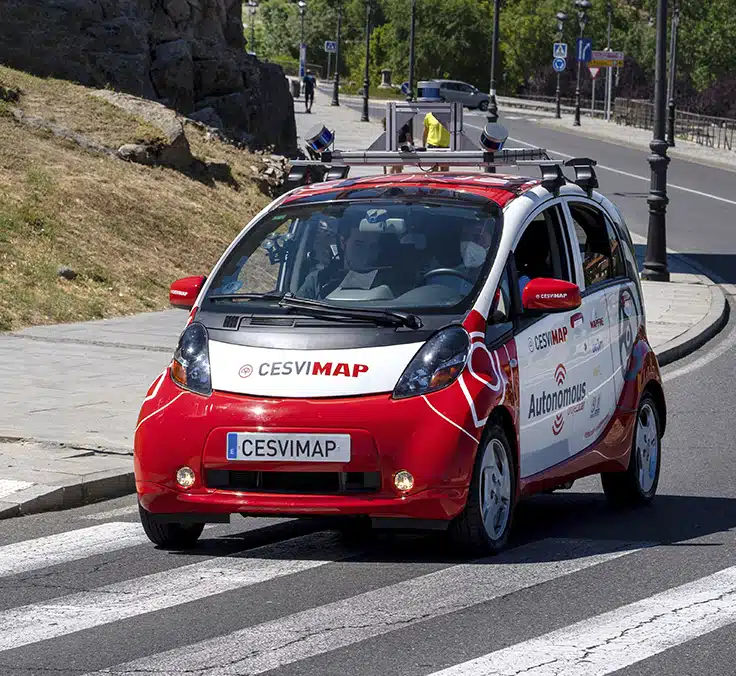If the sky becomes a highway, there will be insurance for flying cars
Years ago, movies like Blade Runner and The Fifth Element offered visionary glimpses of cars racing through the skies. Today, according to Iker Laso, Avionics and UAV Systems Researcher at Tecnalia, “flying cars are not only emerging as a reality but also represent the future of mobility.”
Though they’re not yet strictly flying cars, both public and private entities are developing models that largely resemble small helicopters or giant drones. According to the expert, these projects “are prioritizing easy, intuitive operation, so that they can be piloted by non-professionals and even operate fully autonomously.”
Significant benefits
Flying cars have the potential to revolutionize current mobility by offering a new dimension of movement. They could play a crucial role in easing congestion in city traffic. Just picture the traffic we could redirect if, like conventional aviation, we used different flight levels, with designated lanes, roundabouts, and virtual aerial exits at varying altitudes.
Other benefits would include reducing pollution, with most vehicles being electric, and improving accessibility, providing excellent transportation solutions for areas currently underserved by existing infrastructure.
Technological hurdles and challenges to come
However, their development also faces numerous technological and regulatory challenges. The first on the list is safety. For flying cars to navigate our streets, parks, and buildings, they must come with exceptionally high reliability. According to Iker Laso, “It’s not just about mitigating the most obvious risk, such as the vehicle itself falling, but also ensuring the capability to evade collisions with obstacles or other aerial vehicles sharing the same space.”
The establishment of laws and regulations to govern air traffic is another significant hurdle. These regulations, as yet undefined, will determine where a flying car can take off, fly through the air, and land. They will delineate restricted zones, air navigation schedules, distancing protocols, and more. “The challenge isn’t merely enabling a car to fly in an urban environment; rather, it’s facilitating the coordinated, safe, and efficient flight of multiple vehicles in confined spaces.”
Lastly, energy efficiency poses a critical challenge. Given that flying cars will operate within cities, emphasis is placed on them being silent. This has led to a predominant focus on electric propulsion systems. “Optimizing the efficiency of these systems and energy storage is one of today’s foremost technological priorities and challenges,” affirms Iker Laso.
Commercialization and examples
We’re still uncertain about when they’ll be ready for widespread commercialization. According to Iker Laso, “The current decade, the 2020s, is generally seen as the period for developing these aerial vehicles, with expectations that the following decade, the 2030s, will be when we begin seeing them flying in our cities.”
Meanwhile, at the latest Mobile World Congress (MWC) in Barcelona, we got a glimpse of the first prototype of a flying car from Alef Aeronautics, based in California, USA. This vehicle has received airworthiness certification from the Federal Aviation Administration of the United States, allowing it to undergo initial flight tests in the coming months. It operates like a regular car and can travel both on land and in the air.
Major players like Google and Airbus are also developing their own models, while Uber is gearing up to offer personal air transportation services. On another front, the City of Chicago, USA, has announced plans to launch its first air taxi service in 2025, with hopes of integrating it into the public transit network by 2040. And Dubai, United Arab Emirates, is considering introducing air taxis as early as 2026.
What type of insurance will they need?
There’s no denying that sooner or later we’ll witness cars flying over our cities, but it’s worth noting that they’re unlikely to come cheap.
With this new reality looming, we’ll need to address other aspects that currently concern traditional vehicles, such as the need to take out an insurance policy. We’ll delve into the specifics of their insurance coverage another time. For now, even if your car can’t take flight, you still need this mandatory protection. At MAPFRE, you can find an insurance policy that caters to your needs and vehicle type.
RELATED ARTICLES:



